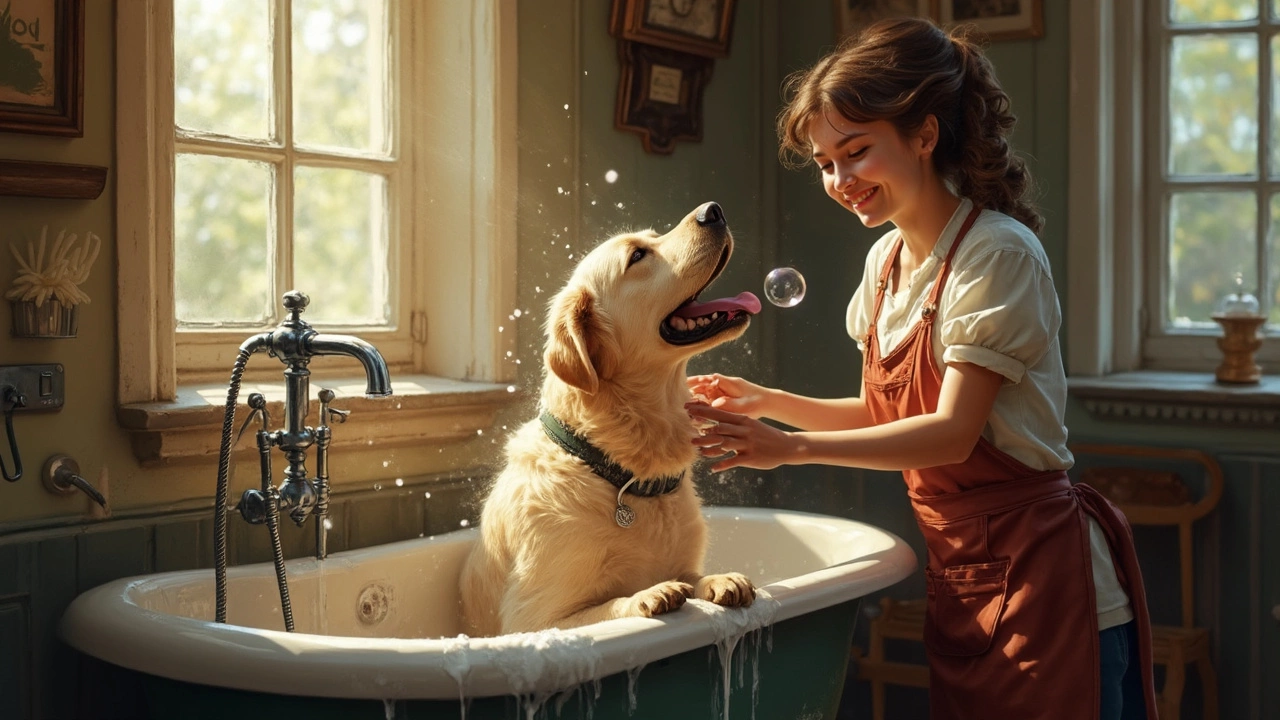Wash or Cut: How to Choose the Best Dog Grooming Method
Ever stood in the bathroom wondering if you should wash your dog first or jump straight to a trim? You’re not alone. The right order can save time, reduce stress, and give a cleaner finish. Below is a quick guide that helps you decide based on coat type, temperament, and the tools you have.
Wet Cutting – What You Need to Know
Wet cutting means you shampoo, rinse, and towel‑dry your dog before you start snipping. This works best for long, silky coats that tangle easily. The water softens the hair, making it easier to glide scissors or clippers through without pulling. If your pup loves the splash, start with a gentle, dog‑safe shampoo, rinse thoroughly, and pat dry until the coat is damp—not soaking.
When the coat is damp, use a slicker brush to remove loose fur and mats. This step is crucial; a tangled coat can snag the blades and cause uneven cuts. After brushing, trim the hair in small sections, checking the length as you go. Wet cutting also lets you see the natural fall of the hair, so you can shape it to match your dog’s body contour.
One downside? Wet hair can shrink as it dries, so if you want a specific length, cut a little longer than you think. Also, keep the room warm; a cold bathroom can make your dog shiver, turning grooming into a nightmare.
Dry Cutting – When It Works Best
Dry cutting skips the wash and works directly on a clean, dry coat. This method shines with double‑coated breeds like the Golden Retriever or Siberian Husky, where the undercoat needs regular trimming to keep overheating at bay. A dry coat shows the true length of each hair, so you can spot uneven growth and spot‑trim problem areas quickly.
Before you start, give your dog a solid brush to remove loose fur and out‑of‑place knots. A comb or de‑shedding tool helps expose the undercoat, making it easier for clippers to reach. Choose a blade size that matches the desired length—most owners use a #10 or #15 blade for a neat, short finish.
Dry cutting also speeds up the process because there’s no drying time. If your dog dislikes water or gets anxious in the tub, this method reduces stress dramatically. Just be mindful of heat from the clippers; let the blades cool every few minutes to avoid burning the skin.
Both wet and dry techniques have their place. If your dog’s coat is prone to matting, start wet; if the coat is fluffy but not tangled, go dry. The key is to observe your pet’s reaction, test a small area first, and adjust your approach as needed.
Finally, keep the grooming area safe: non‑slip mats, proper lighting, and all tools within reach. A calm environment makes the whole wash‑or‑cut decision easier for you and your dog.
So next time you schedule a grooming session, ask yourself: does my dog need a good soak first, or can we jump straight to a dry trim? The answer will give you a smoother job, a happier pet, and a coat that looks and feels its best.
Posted By Bryndle Redding On 15 Apr 2025 Comments (0)
Do Dog Groomers Wash or Cut First? Unraveling the Mystery
Ever wonder if dog groomers wash or cut your furry friend first? Knowing this can help you understand your dog's grooming process better and decide if you should replicate it at home. We'll dive into the typical steps groomers take, why they do it that way, and share some helpful tips for making your pet's grooming day easier. Buckle up for some surprising facts and practical advice.
READ MORE